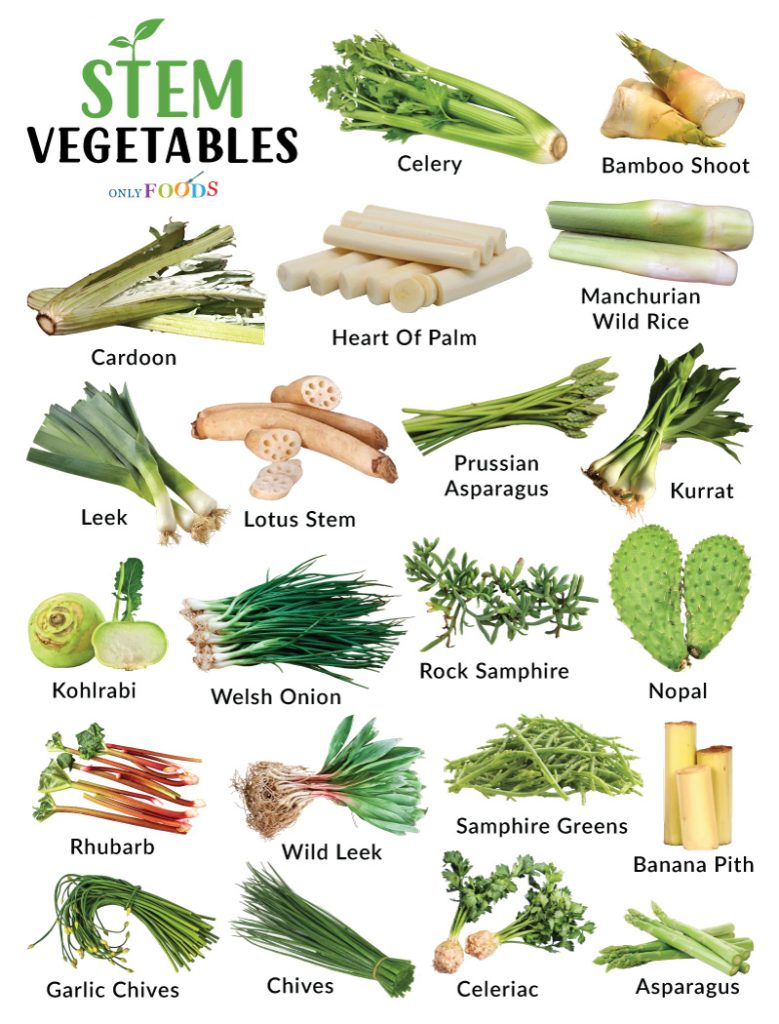Stem Vegetables
Plant parts like roots, leaves, and stems are all used for culinary purposes and are called vegetables. When the stems, sometimes with the stalks, are one of the primary edible parts used in cooking, it is considered a stem vegetable.
Here is a list of all the common stem vegetables widely used in various countries.
List of Different Types of Stem Vegetables
- Asparagus
- Banana Pith
- Cardoon
- Celeriac
- Celery
- Chives
- Garlic Chives
- Heart Of Palm
- Kohlrabi
- Kurrat
- Lotus Stem
- Nopal
- Prussian Asparagus
- Samphire Greens (Sea Beans)
- Welsh Onion
- Leek
- Wild Leek
- Manchurian Wild Rice
- Bamboo Shoot
- Rhubarb
- Rock Samphire (Sea Fennel)
Despite being stem and leaf stalk, rhubarb often features alongside fruits in various lists because of its flavorful tartness that makes it ideal for making sweets and desserts, similar to a fruit.
The list does not include vegetables like potatoes, ginger, and taro because these are storage organs of the plants, modified to store carbohydrates. As a result, they are typically included in the group of root vegetables for all culinary purposes.
Bulb vegetables, like onion and garlic, are grouped with stem vegetables on certain occasions because sometimes, both the bulb and stem are eaten together, like in the case of scallions. However, bulb vegetables are not included in the above list because they are also modified stems.
FAQ
Mushrooms are not stem vegetables. They do not have a stem because they are not botanically considered plants. Mushrooms are a group of edible fungi that are used like vegetables.

